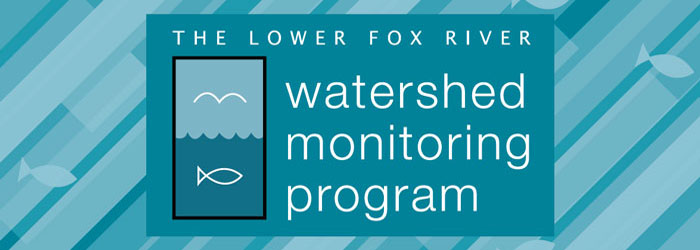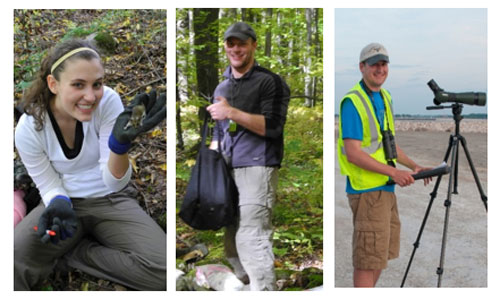2015 Symposium

Welcome to the 12th Annual Student Watershed Symposium!
Tuesday, April 14, 2015
8:00-11:30 (public program)
11:30-3:00 (Student Activites)
This year the symposium will feature a keynote on research by UW--Green Bay students in the Bay of Green Bay, presentations and posters by teachers and students in the monitoring program, tours of the Richter Museum and Fewless Herbarium, a quiz bBowl, and a frog monitoring workshop.
Keynote Presentation: Cat Island Chain Restoration Project
Presented by Chelsea Gunther, Jesse Weinzinger, & Tom Prestby
Graduate Program in Environmental Science & Policy

The keynote talk will introduce symposium participants to the Cat Island Chain Restoration Project and the exciting and innovative work conducted by these three students and the university. Jesse and Chelsea are working on an on-going project to monitor the impacts of restoring the Cat Island Chain in Lower Green Bay on aquatic plant diversity. This past summer was the third field season for this project. Tom is a bird specialist whose thesis work involves monitoring the impacts of the restoration project on migratory shorebird habitat. After two years of monitoring the spring and fall migratory seasons, the preliminary results suggest that this project has had positive implications on a wide range of bird species and will continue to provide necessary stop-over habitat for migratory birds.
Chelsea, Jesse, and Tom are all graduate students at the University of Wisconsin-Green Bay and pursuing their master’s degree in Environmental Science and Policy. All three students have participated in a number of university funded conservation projects including the Great Lakes Coastal Wetland Monitoring Project, where they have traveled to different locations around Lake Huron and Lake Michigan to conduct amphibian and bird surveys. They have also worked at the Wabikon Lake Forest Dynamics Plot in Chequamegon-Nicolet National Forest, which is part of a global network of forest research plots dedicated to increasing scientific knowledge of forest ecosystems.
Student Presentations
Duck Creek Team: Website for Green Bay Southwest
Students from Green Bay Southwest have created a website for their science club that showcases their involvement with LFRWMP.
Trout Creek Team: Public Awareness
Students from Pulaski High School have created videos that demonstrate the importance of public awareness on issues such as nutrient pollution, dead zones, PCB clean-up, and Northern Pike restoration.
Spring Brook Team: Nitrates by the Stream
Students from Oshkosh North have investigated the cause of high nitrate levels in their stream. As part of their work they have contacted landowners near the stream to identify potential sources.
Ashwaubenon Creek: Frogs: Their Importance and Why We Monitor
An introduction to frogs and their importance to watershed ecosystems by East High student Jermaine Toliver-Marx.
Student Poster Presentations
Ashwaubenon Creek, West DePere High School
Arthropod Envy isn’t Healthy, But Neither is Our Stream. Could it Ever “Become” as Good as Duck or Baird ?
Dutchman's Creek, Ashwaubenon High School
Effects of Water Quality Indicators on Fish Reproduction.
Spring Brook, Oshkosh North High School
Nitrates by the Stream.
Trout Creek, Oneida Tribal High School and Pulaski High School
How will recent watershed improvement projects upstream impact our sites on Trout Creek?
Please contact program coordinator at watershed@uwgb.edu for more information.